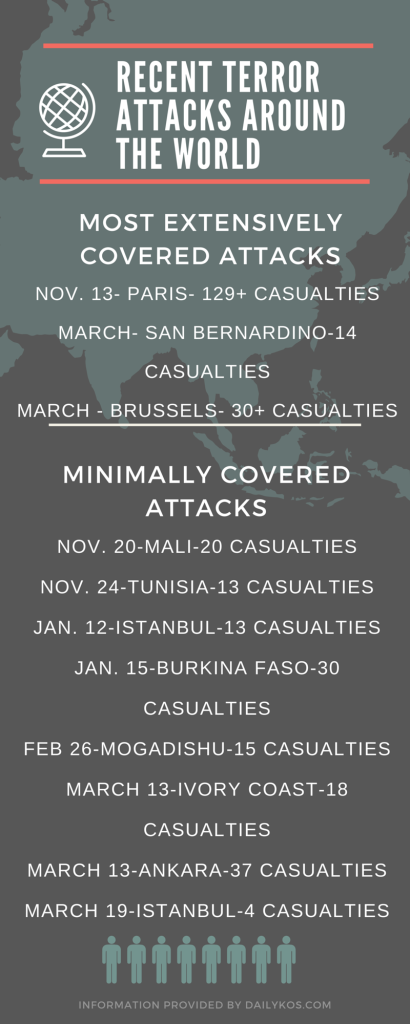News Media and Uneven Coverage of Terror Attacks
In the wake of several large-scale terror attacks around the world, Western news media outlets demonstrated a great amount of bias in how they chose to cover these events. The three most comprehensively, and perhaps excessively, covered terror attacks in Paris, San Bernardino, and Brussels were not the only attacks that deserved coverage.
Since the terror attack in Paris
on Nov. 13, there have been hundreds of other terror attacks around the world, albeit of varying severities. There were at least ten resulting in a substantial number of casualties in foreign countries, but these received little to no media coverage. However, the most recent in Brussels, Belgium, leaving 30 dead and over 100 injured, received almost the same degree of exposure as the Paris attack.
Westernized countries, the United States in particular, gave extensive news coverage of ISIS-related terrorism. This coverage typically only includes the large-scale events or those occurring in well-known cities. This type of biased news practice gives Americans the impression that terrorism related to ISIS is a pervasive problem in European countries, and thus has a direct link to the United States.
This also excludes the ongoing struggles present in Afghanistan, Iraq, Libya, and Syria whose media coverage pales in comparison. While still occurring, these conflicts get minimal attention in the news compared to the inflated attention given to terror events that are not isolated.
It is important to be critical of the perspective and level of coverage that news media outlets are lending, especially when drawing conclusions about the events involved. While the objective of news media should be presenting facts and events in an equal way, the way that media sensationalizes events does not always allow this.


